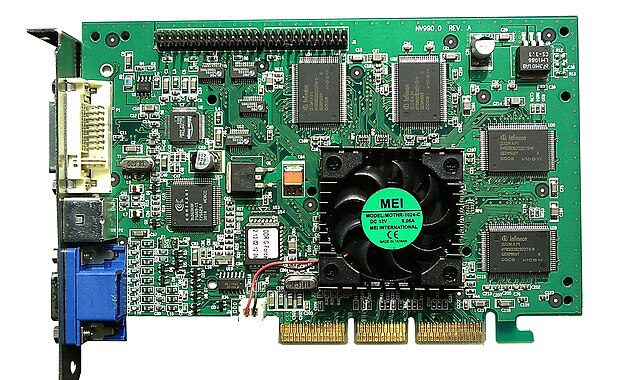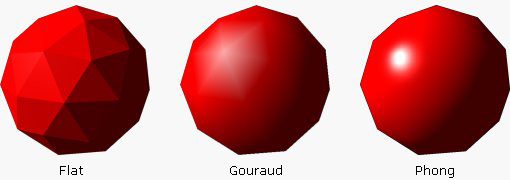
Back in the day, gaming was a whole different scene, all thanks to the humble beginnings of computer graphics. We’re talking about the 1970s and 1980s when pixel art and 2D sprites were the real MVPs. Those colourful blocks formed the basis of many classic games you might catch at retro arcades.
Games like ‘Pong’ and ‘Space Invaders’ became legends, not just for their gameplay but for showing the world what could be done with limited technology. They were ground-breaking for allowing a bunch of pixels to spark the imagination and pull players into new worlds, even without the bells and whistles of today’s high-def graphics.
Diving into this era, you’ll notice how innovation thrived under constraints. Programmers worked their magic with mere kilobytes of memory, crafting visuals that seemed simple but packed a punch in creating unforgettable experiences.
The beauty of these early graphics lies in their simplicity. They opened the door to storytelling in a unique way, letting players fill gaps with their imagination. Tailoring video game storytelling to fit the graphical limits fostered creativity that still influences game design today.
The Rise of 3D: Ushering in a New Era
Picture it: the early 1990s. The leap from 2D to 3D graphics is shaking up the gaming world. This transition isn’t just a step up—it’s like hopping from a tricycle to a spaceship.
Games like ‘Doom’ and ‘Wolfenstein 3D’ have stormed onto the scene, flipping the script on how we interact with virtual spaces. Here, 3D graphics make everything feel more immersive. You’re not just controlling characters; you’re stepping into their universe.
Poly-based graphics start making waves, laying out blueprints for future game development. This isn’t just about looking cool—this tech opens up whole new possibilities in game mechanics and storytelling, tricking the eye with depth and realism.
3D graphics introduced challenges, too. Developers needed new tools and skills to craft these spaces convincingly, pushing the boundaries of what was possible. But with these challenges came innovation that fueled an industry metamorphosis.
Embracing these changes didn’t just impact developers. As players, we got to explore increasingly intricate worlds, each one raising the bar for what’s expected in gaming. This evolution marked a seismic shift that set the stage for today’s complex gaming landscapes.
The Role of GPUs: Powering Realism
Graphics Processing Units, or GPUs, are like the unsung heroes of the gaming world, making stunning visuals possible. If you’ve ever marvelled at lifelike textures during a game, you have a GPU to thank for that.

Think back to when the NVIDIA GeForce series hit the market. That was a game-changer. These tech marvels took graphics to new heights, enhancing not just visuals but also smoothing gameplay. Faster, more powerful GPUs suddenly allowed developers to create richer and more detailed environments.
The introduction of GPUs brought a wave of realism previously unimaginable. With enhanced visual fidelity, games could depict everything from lush forests to sprawling cities, teeming with life and action. This wasn’t just about making things look pretty—it was about crafting believable worlds players could lose themselves in.
GPUs also supercharged computing performance, allowing developers to run complex algorithms that create lifelike physics and responsive interactions with the virtual surroundings. The result? An immersive experience where the line between reality and gaming fades.
For anyone looking to step into the gaming industry or just to understand the magic behind their favourite games, knowing about GPUs is essential. They’re not just tools but the backbone of modern gaming, ensuring every pixel and shadow is just where it should be to create a seamless visual feast for players.
Lighting, Texturing, and Shading: Building Virtual Realities
Lighting, texturing, and shading are the trio of techniques that breathe life into game graphics, turning flat surfaces into vivid, dynamic worlds. Fine-tuning these elements can make the difference between a game that’s just good and one that’s truly unforgettable.
Lighting sets the mood. It’s not just about making sure players can see—it’s about shaping the entire atmosphere of a game. Remember how creepy a game can feel with flickering lights or how epic a scene becomes with a stunning sunset? That’s smart lighting in action. Techniques like ray tracing and real-time global illumination push the envelope, adding depth and realism to every game scene.
The role of texturing can’t be overlooked either. Textures give surfaces character, transforming bland polygons into detailed masterpieces. With advancements like bump mapping and normal mapping, textures add depth without increasing complexity, tricking the eye with intricate details that were never actually modelled. This smart layering gives objects a touch-and-feel texture, making everything seem more tactile and real.

And, of course, shading ties it all together. It’s the subtle art that ensures every object looks three-dimensional, using techniques like Phong and Gouraud shading to manage light on surfaces, casting soft, realistic shadows. It’s about creating that believable interplay between light and material that makes objects appear just right.
For aspiring game artists or those with a curious mind about graphics, mastering these techniques offers some serious cred and finesse. When implemented right, they transform simple pixels into exciting worlds players can’t wait to explore.
Special Effects and Animation: Creating Cinematic Experiences
Special effects and animation turn gaming into a kind of interactive cinema. It’s all about taking realism up a notch by adding bells and whistles that grab your attention and refuse to let go.
Particle systems are one trick in the game dev’s toolkit, simulating effects like rain, smoke, or a character’s explosive magic. These effects make scenes look dynamic and lively, keeping players glued to their screens.
Reflective surfaces and refractions are another way to blend realism with artistry. These techniques simulate the way light interacts with surfaces, whether it’s capturing a character’s reflection in water or the glint off a shiny car’s hood. It’s about making environments that feel alive, reacting in believable ways as you explore them.
Then there’s the magic of animation—especially character animation, which has come a long way with motion capture technology. This tech uses real-world actors to map movements onto digital characters, making every gesture realistic and relatable. Whether it’s a hero’s leap or an enemy’s grimace, these animations link the virtual and real world seamlessly.
And let’s not forget physics simulations, which have allowed games to craft dynamic environments where everything responds accurately to forces like gravity and collision. This realism adds an extra layer of immersion, turning virtual spaces into touchable, reactive worlds.
By mastering these advanced effects, game creators can craft experiences that are both engaging and visually spectacular, ensuring players enjoy not just a game but a complete audiovisual experience.
The Influence of VR and AR: Blurring the Lines Between Reality and Gaming
Virtual Reality (VR) and Augmented Reality (AR) have redefined what gaming can be. By pulling players further into the scene, these technologies have blurred the boundaries between digital worlds and reality.

When we talk about VR, it’s about total immersion. If you’ve ever strapped on a headset for a game like ‘Half-Life: Alyx‘, you’ll know what I’m saying. You’re not just playing the game—you’re virtually there, navigating through dimensions that feel oh-so-real. The graphics in VR aren’t just eye candy; they wrap around you, creating a 360-degree experience that’s hard to walk away from.
With AR, things get a little different. Instead of diving fully into virtuality, AR games bring digital elements into our real world. Think of games like ‘Pokémon Go’, where those cute creatures appear on your phone screen against real-world backdrops. It’s about enhancing reality rather than replacing it, offering a layer of digital interaction that overlays the everyday.
There are huge challenges, though. Developers need to tailor graphics to not just work seamlessly but also convince players that the new reality they interact with is feasible. It’s a dance between fantasy and believability, where one misplaced pixel can ruin the magic.
Yet, what an opportunity, right? For game developers willing to invest in these cutting-edge graphics, the payoff is next-level engagement and innovation, making stories more gripping and experiences more personal. The evolving field of VR and AR isn’t just a fad—it’s a fresh canvas ready for creative minds to paint vivid, interactive worlds.
The Future of Game Graphics: Charting New Territories

Game graphics keep pushing forward, exploring new possibilities that feel straight out of sci-fi. Artificial Intelligence (AI) is stepping into the spotlight, changing how graphics are developed. Techniques like AI-based upscaling are letting developers boost resolutions without needing expensive hardware. It’s saving time and resources, all while amping up visual clarity.
Next-gen consoles are shaking things up too. With more horsepower under the hood, they support advanced graphics techniques like ray tracing, which mimics real-world lighting with uncanny accuracy. This tech is cranking realism up to eleven, crafting atmospheres that look and feel authentic.
Then there’s quantum computing. We’re not there yet, but when it fully integrates with gaming, it promises a leap in computing power, opening doors to detailed simulations and interactive worlds we’ve only dreamed of. That’s a future where choices might impact not just the narrative but also the world’s dynamics, creating gameplay experiences as intelligent and unpredictable as reality itself.
For gamers and developers, this future holds thrilling prospects. Whether you’re crafting these worlds or simply enjoying them, staying up to date with the latest tech trends will keep you on the cutting edge, ready to ride the next wave of revolutionary game graphics.
